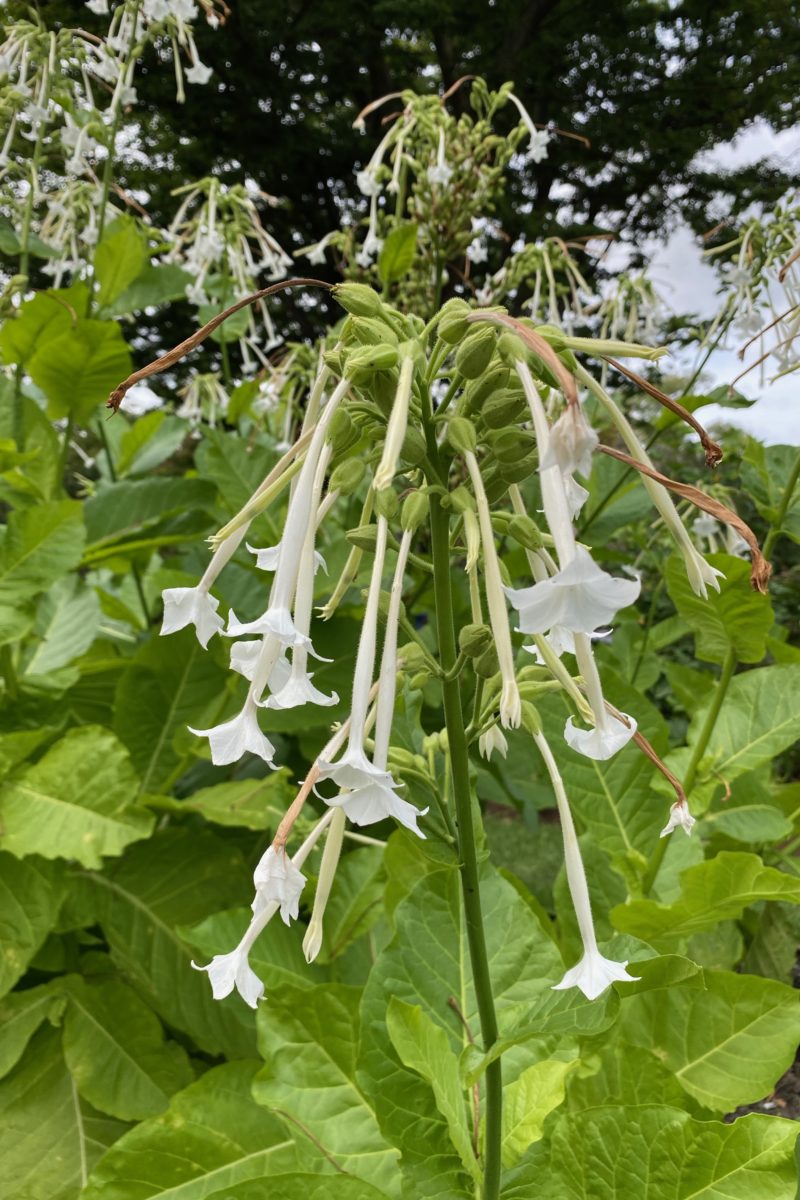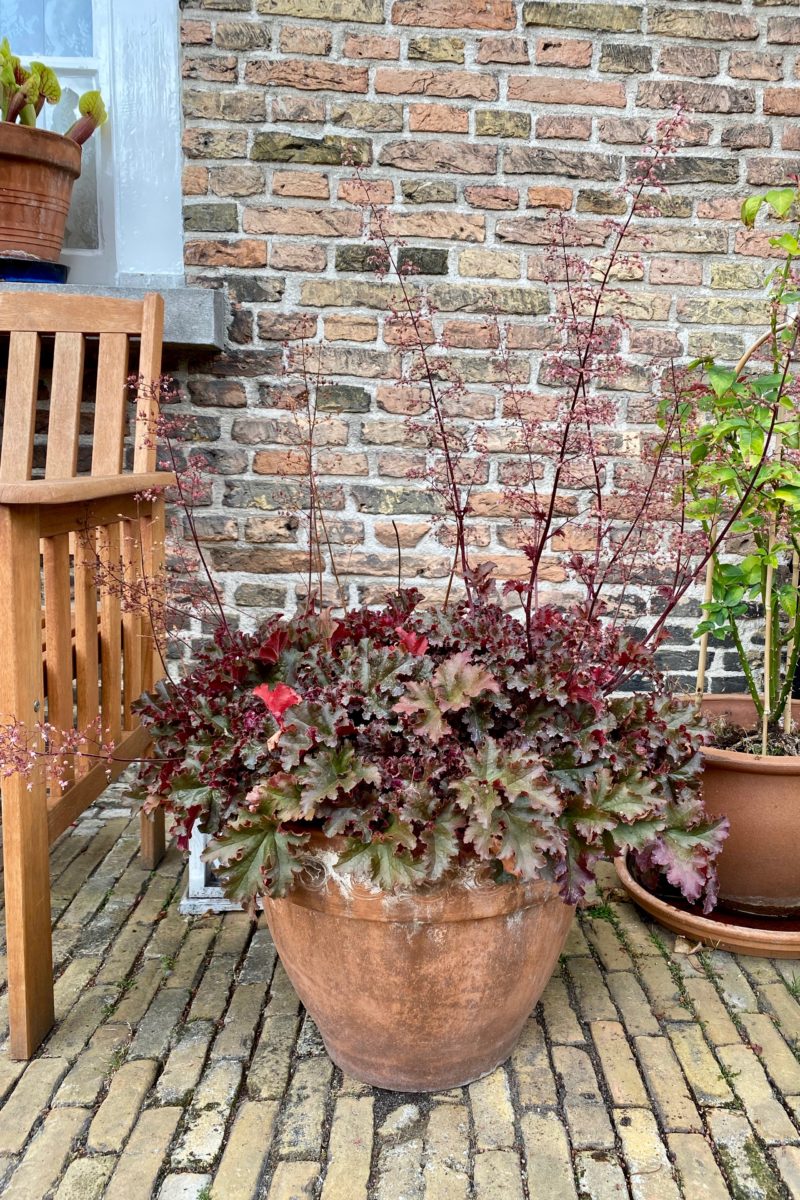Tell me if this story sounds familiar. You love perennials, so you court them assiduously. In return, they reward your efforts with an abundance of beautiful flowers.
You think your relationship is on the right path, so there’s no doubt in your mind that those perennials will be around forever. Until one year, when your flowers just don’t seem to come back with the same passion and vigor. Where has the love gone?
You did nothing wrong, my gardening friend! But you may have invested a bit too much in a subcategory of perennial plants called “short-lived perennials.”
So if you’ve ever felt sorry for yourself for killing yet another plant that was labeled perennial, I hope this article will take a bit of guilt off your shoulders. It wasn’t your brown thumb that did the deed (the brown thumb is just an excuse, anyway), it was nature’s way.
Perennials are plants that live for more than two years Some perennials like peonies can thrive in your garden for over 100 years However, not all perennials have the same long lifespan. There is a category called “short lived perennials” that only stick around for 3-5 years typically.
As a gardener, understanding what short lived perennials are and how to care for them properly can help you make the most of these beautiful plants In this guide, I’ll explain everything you need to know about short lived perennials.
What is the Definition of a Short Lived Perennial?
The basic definition of a short lived perennial is a plant that lives for more than 2 years but less than 10 years. Most experts define short lived perennials as ones that live for 3-5 years.
After 3-5 years, a short lived perennial will start to decline in vigor and produce fewer, smaller flowers. The blooms and foliage may look ragged. Eventually the plant dies out completely.
This is different from an annual which completes its entire lifecycle in one year. It’s also different from a true perennial that can survive for decades with proper care.
Why Grow Short Lived Perennials?
If short lived perennials die after just a few years, why bother growing them at all? Here are some excellent reasons to include these plants in your garden:
-
Abundant blooms – Many short lived perennials put on an amazing display of flowers in their first couple seasons. They offer more instant gratification compared to long lived perennials.
-
Self-sowing – Some short lived perennials will self-seed new plants before they die out. This gives you free replacement plants.
-
Easy propagation – Short lived perennials like delphiniums are easy to propagate from cuttings, division or collecting seeds. Replacing them is not difficult.
-
Less maintenance – True perennials require frequent pruning, dividing, etc. to stay healthy for decades. Short lived perennials tend to be lower maintenance.
-
Good for pots – Container gardening suits short lived perennials well since the pots need refreshers every few years anyway.
So with proper planning, short lived perennials can absolutely earn their place in your beds, borders or containers. Take advantage of their merits while making sure to propagate the next generation on schedule.
10 Examples of Popular Short Lived Perennials
Now that you understand the concept of short lived perennials, let’s look at some popular examples you might find in gardens:
1. Lupine
This stately spiked flower thrives for about 5 years before declining. Luckily lupine produces abundant seeds and also grows well from cuttings.
2. Delphinium
Delphiniums put on a stunning display of flowers in their first few seasons but fade by year five. Cutting back spent blooms encourages reblooming.
3. Coral Bells
After 3-4 years, coral bells start to look leggy and flower less. Divide congested clumps in fall to rejuvenate them.
4. Columbine
This spring flower seeds itself readily and comes back for about 5 years. Divide large clumps every 2-3 years for best flowering.
5. Peonies
Herbaceous peonies have incredible longevity but tree peonies are short lived and only last 5-10 years typically.
6. Bee Balm
Bee balm spreads aggressively, becoming overcrowded and flowering less after 3-4 years. Divide in fall to control spread and rejuvenate.
7. Garden Phlox
Garden phlox is susceptible to powdery mildew after a few years but grows well from cuttings to start new plants.
8. Lavender
English lavenders last just 5-10 years or so before needing replacement. French lavenders are longer lived.
9. Russian Sage
With proper pruning, Russian sage can flower nicely for 5-8 years but ultimately needs dividing or replacing.
10. Lady’s Mantle
The ruffled leaves of lady’s mantle look best the first 2-3 years. After that, divide congested clumps in fall to keep plants young.
This list just scratches the surface of popular short lived perennials to consider. Others include yarrow, maiden grass, sea holly, garden sage, amsonia, lamb’s ear, artemesia, geranium, gas plant, gayfeather and more.
How to Get the Most Life from Short Lived Perennials
Since short lived perennials don’t stick around forever, you need strategies to replenish them and keep the flower power going. Here are some tips:
-
Let plants self-sow – Allow seed heads to develop and drop seeds to get volunteer seedlings. These will replace the parent plant.
-
Divide plants – Congested clumps can be divided and replanted every 3-4 years. Discard the old woody centers.
-
Take cuttings – Cuttings from healthy young shoots will root easily and make new plants.
-
Start new plants from seed – Collect seeds or buy new seed packs so you always have fresh young plants coming along.
-
Give ideal care – Make sure plants get the light, soil, moisture and nutrients they need to thrive as long as possible.
-
Replace old plants promptly – Don’t wait for decline to be severe. Be proactive about refreshing short lived perennials.
Follow these guidelines and you’ll get the most enjoyment possible from short lived perennials before needing to replace them.
The Takeaway on Short Lived Perennials
While short lived perennials don’t have the staying power of super long lived plants like peonies, they earn their place in gardens by providing bountiful blooms for 3-5 years.
Knowing which perennials fall into this short lived category can help you avoid disappointment. And taking simple steps to propagate and replenish short lived perennials will ensure you get to enjoy their charms for many years.

Flowering tobacco (Nicotiana sylvestris)
Don’t put this in your pipe and smoke it. Nicotiana sylvestris (flowering tobacco) is not the same as Nicotiana tabacum (the tobacco plant), but the two are closely related and they both belong to the nightshade family (Solanaceae).
Flowering tobacco makes the list of short-lived perennials because it’s a tender perennial, due to its Latin American roots. It’s winter hardy only up to USDA Zone 10, but you can overwinter it further North if you grow it in a sheltered location or put it under a cold frame cover before the first frost.
Some gardeners simply prune the flowering tobacco plant low to the ground in the fall and mulch around it to help it survive the winter.


However, the flowering tobacco is such a fast grower (up to five feet – 1.5 meters – during one season) that gardeners in the North often don’t bother with frost protection and treat this one as an annual plant. If your flowering tobacco doesn’t survive the winter, simply start it again from seed in spring.
Ever since Victorian times, the flowering tobacco (also known as sweet tobacco) has been a favorite to plant along pathways and next to windows where their scent could waft and delight passers-by. The tall, trumpet-like cluster of long skinny flowers shoots out of a mound of large textured leaves. The flowers emit a fragrance that gets especially strong later in the day.
Be careful. The tiny hairs that cover the foliage may cause skin irritation to people already prone to contact dermatitis.
Is a short-lived perennial plant the same as a biennial plant?
No, these two categories are not the same thing. A biennial (as we discussed in this article) only flowers once before it dies, whereas a short-lived perennial will flower multiple years in a row.
However, some short-lived perennials may be grown as biennials on purpose, especially the ones that have a noticeable decline in bloom quality from the first to the second year. This is often the case with Arctic poppies (Papaver nudicaule), for example (the last item on our list).
Another reason why you grow short-lived perennials as biennial is if you grow them in pots. Coral bells (Heuchera) are a good example of this practice.


What the heck is a “perennial?!”
FAQ
What is a short-lived perennial?
Well, it turns out that “perennial” doesn’t mean “forever.” It just means that the plant takes more than one year to complete its life cycle, unlike annuals that grow, bloom, set seed and perish all in one year. Short-lived perennials may live three to five years before they disappear.
What does short term perennial mean?
Generally, short-lived perennials are considered those that live 3 to 5 years before they decline. Long-lived perennials can be expected to live 10 years or longer. Some plants sold as perennials are biennials, growing foliage the first year and flowering the next, after which they’re kaput.
How long do short-lived perennials last?
Short-lived perennials live anywhere from three to ten years. According to Richard Jauron at Iowa State University, short-lived perennials include coreopsis, Shasta daisy, and scabiosa.
What are the best low maintenance perennials?
- Double Blooming Knockout Roses. I know, you probably don’t think Roses are “low maintenance” but I’m here to tell you THEY ARE! …
- Sedum. Sedum is quite possibly the easiest perennial to grow (at least where we live). …
- Iris. …
- Dianthus. …
- Black-Eyed Susans. …
- Hostas. …
- Ferns. …
- Hydrangeas.
